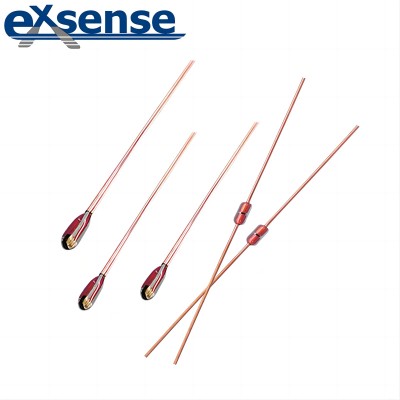What is the dissipation factor (δ) of NTC thermistor?
At a specified ambient temperature, the ratio of the change rate of the thermistor’s power dissipation to its corresponding temperature change. It represents the power consumed to raise the temperature of the thermal resistor by 1°C. In the working temperature range, δ changes with the ambient temperature.
Usually, most glass encapsulated resistors are axial type, with high dissipation factor, for example higher than 0.5mW/℃. The glass tube is also big: generally 1.3mm and 2.3mm. Axial glass encapsulated thermistor is not suitable for high-precision temperature detection because of its structure and dissipation factor.
To solve this problem, Exsense has developed a radial thermistor with low dissipation factor: the two dumet wires of the glass encapsulated thermistor (radial) are on both sides of the chip, and the dissipation factor of which is within 0.25mW/°C. When lower power is applied to the resistor, the radial glass encapsulated thermistor can heat itself to 180°C to 200°C in a short period of time, which is suitable for high temperatures. This radial thermistor is with a small size, its glass bead is also small. Dumet wires are on both sides of the chip, which is more convenient to use. Thisr adial glass encapsulated thermistor is designed for high-precision temperature detection.

